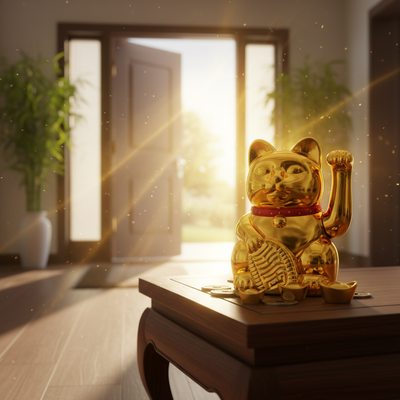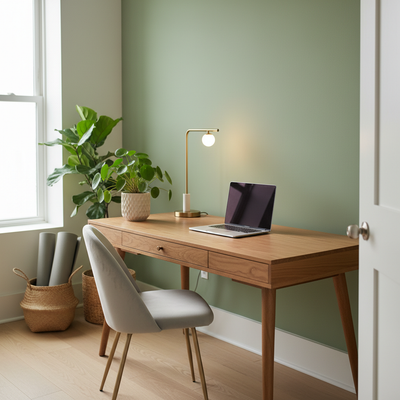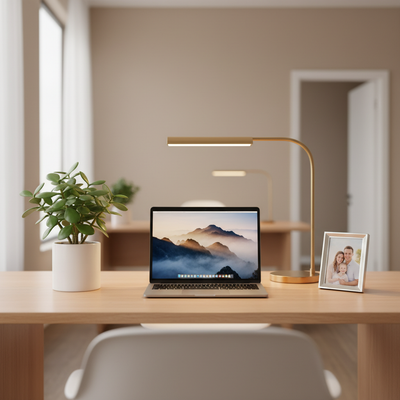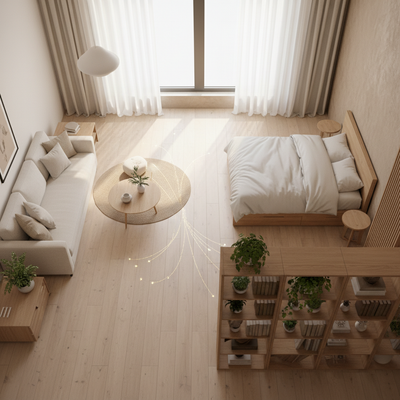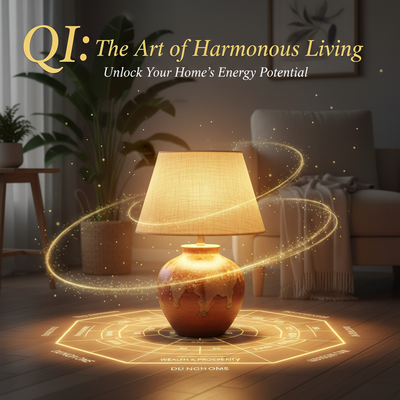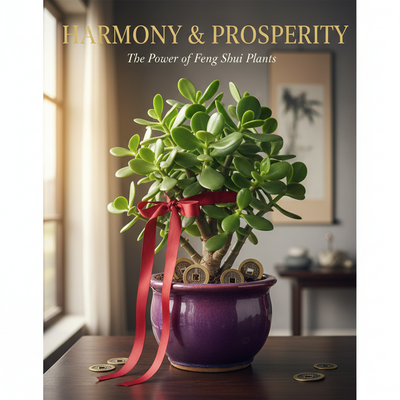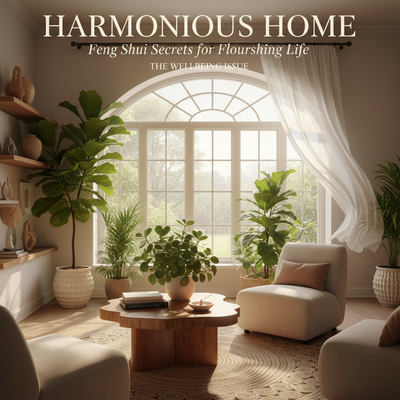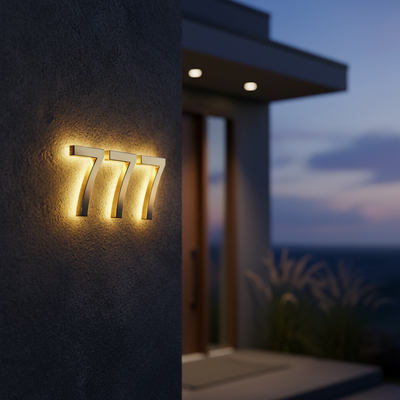Your bedroom is more than just a place to sleep. It's your personal safe space, where you rest, recharge, and connect with yourself and your partner. The energy in this room greatly affects how well you sleep, your relationships, and your overall health. One powerful but often forgotten tool for changing this energy is the color of your curtains. They are one of the easiest and most effective ways to use Feng Shui ideas in your home.
So, what are the best feng shui curtain colors for the bedroom? While soft, natural, and neutral colors are usually recommended to create calm feelings, the perfect color is ultimately a very personal choice based on your specific goals and energy. This guide will give you a complete, step-by-step process, moving from basic ideas to personalized strategies, to help you choose the ideal curtain color to transform your bedroom into a peaceful and positive space.
Understanding Core Feng Shui

To make a smart choice, it's important to understand the 'why' behind the recommendations. Feng Shui is not about strict rules but about understanding and guiding energy to create balance. By learning a few core ideas, you give yourself the power to make decisions that work with your space and your personal needs, rather than just following a list of do's and don'ts.
Qi in the Bedroom
At the heart of Feng Shui is the idea of Qi (pronounced "chee"), which is the vital life force energy that flows through everything. The main goal in bedroom Feng Shui is to create a calm, nourishing, and supportive flow of Qi. You want this energy to move gently, not rush through or become stuck. Curtains play an important role in this process. They soften harsh sunlight, provide needed privacy, and create a sense of enclosure and security. All of these functions help to stabilize the room's Qi, making it a more restful environment.
Yin and Yang Balance
The universe is controlled by the interaction of two opposing yet complementary forces: Yin and Yang. Yang is active, bright, hard, and masculine energy. Yin is passive, soft, dark, and feminine energy. While all spaces need a balance of both, the bedroom should be mainly a Yin space to promote rest, relaxation, and thinking inward. Curtain color is a main way to influence this balance. Darker, softer, and more muted colors are naturally more Yin, helping to quiet the room's energy and prepare your body for sleep. Bright, vibrant colors are Yang and can be too stimulating for a restful space.
The Five Elements (Wu Xing)
The Five Elements, or Wu Xing, is a cornerstone of Feng Shui philosophy. This system puts all things, including colors, into five elemental phases: Wood, Fire, Earth, Metal, and Water. These elements interact in two main cycles. Understanding these cycles is key to creating balance.
- The Productive Cycle: This is a cycle of creation and nourishment. Water nourishes Wood, Wood fuels Fire, Fire creates Earth (ash), Earth bears Metal, and Metal carries Water (condensation).
- The Destructive Cycle: This is a cycle of control and destruction. Water puts out Fire, Fire melts Metal, Metal chops Wood, Wood parts Earth, and Earth dams Water.
Every color corresponds to an element. By choosing a curtain color, you are bringing a specific elemental energy into your room. The goal is to select an element that supports your intentions for the space, creating a harmonious and balanced environment.
Best Colors for Harmony
Now we move to the 'what'—the specific colors that are generally most helpful for a bedroom's Feng Shui. These suggestions are organized by the type of energy they promote, providing a clear starting point for most people seeking to improve their sanctuary's harmony and well-being.
Colors for Ultimate Rest
These colors are linked to the Earth element, which is all about stability, grounding, and nourishment. They create a feeling of being held and supported, which is ideal for reducing stress and promoting deep, restorative sleep. These are often the safest and most universally helpful choices for a bedroom.
- Beige & Cream: These are the classic colors of stability. They are neutral, calming, and promote a sense of nourishment and overall balance. Creamy whites are far better than stark, clinical whites, offering warmth instead of coldness.
- Soft Brown/Taupe: These deeper earthy tones are incredibly grounding. They connect you to the stability of the earth, helping to anchor your energy and reduce anxiety. They create a cozy, secure feeling perfect for a sleep sanctuary.
- Peach & Soft Pinks: Often called "skin tones," these colors create a uniquely nurturing and intimate atmosphere. They are associated with warmth, care, and gentle love, making the bedroom feel like a soft embrace. They are excellent for fostering self-care and relationship warmth.
Colors for Health and Renewal
These colors are connected to the Wood and Water elements, which govern growth and serenity. They are ideal for bedrooms where the focus is on healing, starting fresh, or simply creating a deep sense of peace.
- Greens (Light Sage, Celadon): Green is the color of the Wood element. Its energy is one of growth, healing, vitality, and new beginnings. A soft sage or celery green can introduce a feeling of gentle renewal, making it an excellent choice for anyone focused on improving their physical or emotional health. It brings the restorative energy of nature indoors.
- Blues (Pale Blue, Aqua): Blue is the color of the Water element. Its energy is associated with calmness, serenity, introspection, and wisdom. A pale, soft blue can be incredibly tranquil, helping to lower blood pressure and promote a peaceful night's sleep. However, it should be used with some awareness. Too much dark or cold blue can sometimes feel isolating or lead to sadder, more introspective moods. Balance is key.
Pinks and Reds for Romance
These colors are strongly associated with the Fire element, which governs passion, fame, and relationships. When used thoughtfully, they can be powerful tools for attracting a partner or enhancing the romance in an existing relationship.
- Pinks (Dusty Rose, Blush): Pink is the classic color of love in Feng Shui. It represents softness, partnership, and affection. Unlike the high energy of red, softer pinks are gentle and inviting. They create a romantic atmosphere without being over-stimulating, making them a perfect primary choice for a relationship-focused bedroom.
- Red (as an accent): Red is the most powerful color of the Fire element, representing passion, romance, and high energy. Because it is so intensely Yang, a full wall of red curtains is almost always too stimulating for a bedroom and can lead to arguments or restlessness. The expert way to use red is as an accent—a red pattern or trim on a neutral curtain, for example. This introduces the passionate energy without overwhelming the room's need for Yin tranquility.
Whites and Metallics for Clarity
These colors are connected to the Metal element, which is associated with precision, clarity, organization, and focus. They can create a clean, crisp, and modern feel in a bedroom.
- Off-White/Ivory: A soft off-white or ivory represents purity and cleanliness. It's a highly versatile choice that can make a room feel open and uncluttered. It pairs beautifully with other elemental colors. Just be sure to avoid a stark, bright white, which can feel sterile and unwelcoming.
- Light Gray & Metallics (Silver, Gold): The Metal element also includes light gray and metallic hues like silver and gold. These colors bring an energy of precision and efficiency. While this can be beneficial, it's important to balance these cooler tones with soft textures in the curtain fabric (like velvet or a thick weave) and warmer elements elsewhere in the room to prevent the space from feeling cold or rigid.
Personalizing Your Color Choice
While the general recommendations provide a fantastic starting point, the most powerful Feng Shui applications are personalized. Your home and your personal energy are unique. The following methods provide a deeper, more customized approach to selecting the perfect curtain color, transforming generic advice into a tailored solution. This is how you answer the question, "What's best for me?"
Method 1: The Bagua Map
The Bagua is the energy map of Feng Shui. It divides any space into nine areas, each corresponding to a specific area of life, a compass direction, and a governing element. By determining which direction your bedroom is located in within your home's overall floor plan, you can choose a curtain color that enhances the energy of that specific life area.
First, stand at the entrance of your home with a compass to determine the directions. Then, identify where your bedroom falls. Use the table below to guide your color choice.
| Direction | Life Area | Element | Recommended Curtain Colors |
|---|---|---|---|
| North | Career & Path in Life | Water | Deep Blues, Black (use as accents to avoid depression) |
| Northeast | Knowledge & Self-Cultivation | Earth | Beiges, Sandy Yellows, Light Browns |
| East | Family & Health | Wood | All shades of Green, Light Brown |
| Southeast | Wealth & Abundance | Wood | Greens, Purple (Purple is a Fire color that boosts Wood) |
| South | Fame & Reputation | Fire | Reds, Oranges, Pinks, Purple (use as accents) |
| Southwest | Love & Marriage | Earth | Earthy Tones, Pinks, Reds |
| West | Children & Creativity | Metal | Whites, Grays, Metallics (Gold, Silver) |
| Northwest | Helpful People & Travel | Metal | Whites, Grays, Metallics |
For example, if your bedroom is in the Southwest sector of your home, the area for Love & Marriage, choosing curtains in earthy tones (beige, taupe) or romantic pinks would powerfully support and nourish relationship energy.
Method 2: Your Kua Number
This is a highly personalized technique that aligns the room's energy directly with your own. Your Kua number is a digit from 1 to 9 derived from your birth year and gender, which determines your personal birth element and favorable directions. You can find your Kua number using a simple online calculator.
The principle is to choose curtain colors that either represent your element or support it through the Productive Cycle.
- If you are a 'Wood' person (Kua 3, 4): Choose Water colors (blues, black accents) to nourish you, or Wood colors (greens, browns) to strengthen your own energy.
- If you are a 'Fire' person (Kua 9): Choose Wood colors (greens) to fuel you, or Fire colors (pinks, reds as accents) to strengthen your energy.
- If you are an 'Earth' person (Kua 2, 5, 8): Choose Fire colors (pinks, purples) to create you, or Earth colors (beiges, yellows, taupes) to strengthen your energy.
- If you are a 'Metal' person (Kua 6, 7): Choose Earth colors (beiges, light yellows) to support you, or Metal colors (whites, grays, metallics) to strengthen your energy.
- If you are a 'Water' person (Kua 1): Choose Metal colors (whites, grays) to create you, or Water colors (blues, black accents) to strengthen your energy.
What If Partners Differ?

This is a very common and important question. When partners have different Kua numbers and birth elements, harmony is key. You have a few excellent options. You can choose a color from an element that acts as a "bridge" in the Productive Cycle. For example, if one partner is Wood and the other is Fire, using Wood's color (green) benefits both, as green curtains (Wood) will directly fuel the Fire person. Alternatively, you could choose a neutral element like Earth (beige, cream) that is generally harmonious for all. Another sophisticated approach is to use a neutral base curtain with a pattern that incorporates colors from both partners' supporting elements.
Colors and Patterns to Avoid
Just as important as knowing what to choose is knowing what to avoid. Certain colors and patterns can accidentally create disruptive energy in your most personal space. Being mindful of these will help you prevent common mistakes that can lead to restlessness, anxiety, or emotional imbalance.
Overly Stimulating Yang Colors
- Bright Red, Orange, Bright Yellow: These are high-energy Fire element colors. They are fantastic for active, social spaces like a kitchen or playroom, but they are too Yang for the bedroom. They can introduce an energy of agitation that may lead to restlessness, arguments, or insomnia. If you love these colors, use them as very small decorative accents, but never as the dominant color of your curtains.
- Stark White: We've mentioned this before, but it bears repeating. A brilliant, clinical white lacks the nurturing, warm quality needed for a restful sanctuary. It can feel sterile, lonely, and harsh on the eyes, which is the opposite of the soft, Yin energy you want to cultivate. Always opt for a softer off-white, ivory, or cream instead.
Heavy or Depressive Colors
- Large Amounts of Black or Dark Blue: While black and dark blue are the colors of the Water element, using them in large quantities on curtains can be overwhelming. This much deep Water energy can create a heavy, depressive atmosphere, leading to feelings of sadness or a sense of being "drowned" in emotion. They are best used sparingly as grounding accents in a pattern or trim.
- Dark Gray: A room dominated by dark gray can feel draining and lifeless. It's a color that can lack vitality and, if not balanced with warm or bright elements, can contribute to a stagnant, depressive mood. If you like gray, choose a light, soft dove gray and pair it with warm textures and colors.
Problematic Patterns
The design on your curtains carries its own energetic message. Be mindful of the imagery you bring into your sleep space.
- Sharp, Angular Designs: Patterns with sharp points, triangles, or aggressive, spiky shapes create what is known as "sha qi," or cutting energy. This energy is unsettling and aggressive, disrupting the peace of the room. Opt for soft, flowing, or rounded patterns instead.
- Representations of Water: While a blue color is fine, curtains with patterns depicting large bodies of water—like ocean scenes or waterfalls—are considered unlucky. The concept is that you don't want the symbolic weight of a large body of water "hanging over you" while you sleep.
- Patterns with Wild Animals: Images of predatory or wild animals, even if stylized, can introduce an aggressive or untamed energy into the bedroom, which is counterproductive to rest and peace.
Beyond Color: Material and Style
Excellent Feng Shui is holistic. While color is a primary tool, the material and style of your curtains also have a significant impact on the room's energy. Considering these factors will enhance the positive effects of your color choice, making your efforts even more effective and creating a truly harmonious space.
Fabric Choices and Textures
The material of your curtains affects the Qi of the room. Whenever possible, advocate for natural fibers.
- Natural Fibers: Materials like cotton, linen, silk, and velvet have a better "breathability" and hold a more natural, grounded Qi than their synthetic counterparts. They feel better to the touch and contribute to a healthier indoor environment. Velvet, in particular, adds a luxurious, protective quality, while linen offers a relaxed, earthy feel.
- Synthetic Fabrics: While natural fibers are ideal, modern synthetic fabrics can be practical and affordable. If you choose synthetics, the key is to prioritize texture. Ensure the fabric is soft, hangs well, and is pleasing to the touch. Avoid stiff, scratchy, or shiny materials that can feel harsh and artificial.
Curtain Style and Layering
The way your curtains are constructed and hung influences the balance of Yin and Yang.
- Heavy, Opaque Drapes: Blackout or heavy drapes are excellent for creating a strong Yin environment. They block out external light, street noise, and the gaze of outsiders, creating a secure, cocoon-like feeling. This is ideal for promoting deep, uninterrupted sleep and is highly recommended for light-sensitive individuals.
- Light, Sheer Curtains: Sheer curtains are more Yang. They allow soft, gentle morning light to filter into the room, which can help with waking up naturally. They offer a layer of privacy while still feeling light and airy.
- The Ideal Solution: Layering is often the perfect Feng Shui solution. It provides ultimate versatility. You can hang a set of sheer curtains close to the window and a set of heavy, opaque drapes over them. This allows you to control the light (Yang) and privacy (Yin) perfectly, adjusting the room's energy to suit the time of day and your mood.
Cleanliness and Condition
Finally, the state of your curtains is paramount. From a Feng Shui perspective, dust and grime create stagnant, negative energy (sha qi). Curtains that are torn, faded, or hanging from a broken rod project an energy of neglect. It is vital to keep your curtains clean by dusting or washing them regularly. Promptly repair or replace any that are damaged to ensure the energy in your sanctuary remains fresh, positive, and well-cared-for.
From Theory to Reality
To see how these principles create tangible change, consider a real-world example. It's one thing to talk about elements and colors, and another to see them work.
Helping a Client Find Harmony
At THE QI FLOW, our team recently consulted with a couple who felt disconnected and were sleeping poorly. Their bedroom was located in the Southwest corner of their home, which, according to the Bagua map, is the area governing Love and Marriage. Its native element is Earth. However, the room was decorated with cool grays and stark white curtains, colors of the Metal element. In the Five Element cycle, Metal drains or weakens Earth. They were unintentionally draining the relationship energy from their own sanctuary.
Our recommendation was simple yet powerful. We advised them to switch to curtains in a warm, earthy beige to nourish the Earth element of the space. To also honor the husband's 'Wood' birth element, we suggested a fabric with a subtle, soft green leaf motif. This single change helped to nourish the Earth energy, support the Wood element, and create a more serene, supportive environment. The clients reported an immediate and noticeable improvement in both their sleep quality and their feeling of connection with each other.
Weaving Your Perfect Sanctuary
Choosing the right feng shui curtain colors for bedroom is a journey of weaving together knowledge and intuition. You now have the tools to make a choice that goes far beyond simple decoration. By understanding the basics of Qi, Yin-Yang, and the Five Elements, you can select a general color that promotes the energy you seek. From there, you can personalize your choice by aligning it with your bedroom's Bagua location or your own personal birth element. Remember to choose materials and styles that feel good to you and to keep your curtains in excellent condition. Ultimately, the goal is to create a personal sanctuary that looks beautiful, feels supportive, and nurtures your well-being on every level.
